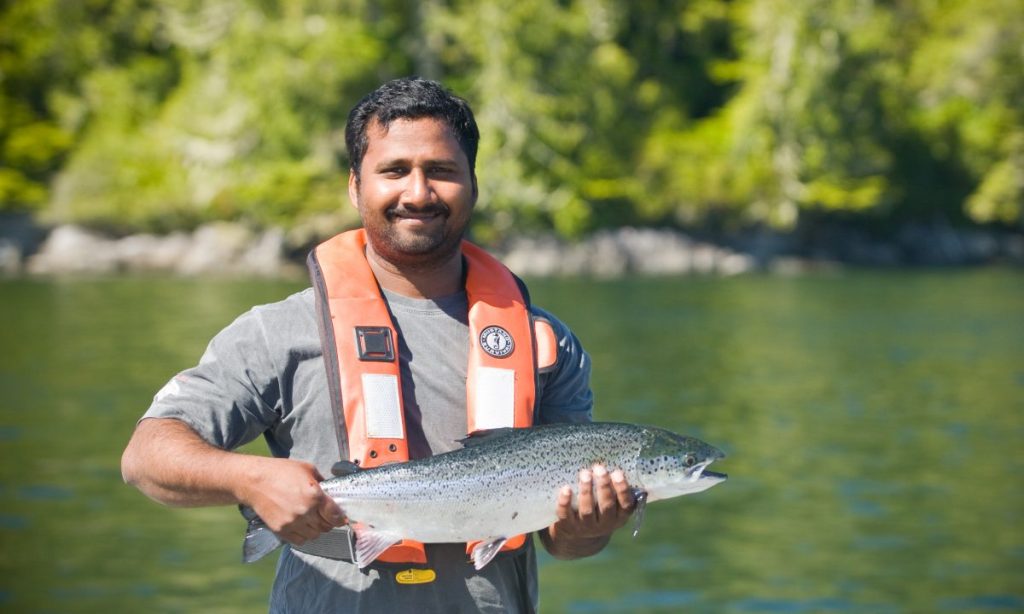
Salmon farmers outperform other protein producers
December 2, 2021
By
Liza Mayer
 For the third year in a row, Mowi is No. 1 in the sustainability ranking of the world’s 60 largest publicly listed protein producers. (Photo: Mowi)
For the third year in a row, Mowi is No. 1 in the sustainability ranking of the world’s 60 largest publicly listed protein producers. (Photo: Mowi) Aquaculture scored better than all other protein producers on all risk factors in an assessment of world’s largest meat, fish and dairy companies.
The Coller FAIRR Protein Producer Index said aquaculture continues to outperform other animal protein producers on environmental, social and governance factors.
For the third year in a row, Mowi topped the ranking, beating meat and dairy farmers and other farmed fish producers.
“This shows again that Mowi is at the forefront of sustainable food production. I am proud and humbled to lead a company and an organisation that is a recognised leader in sustainable food production. Importantly, the Index highlights that aquaculture and salmon farming is part of the solution toward shifting to a green economy,” said Mowi CEO Ivan Vindheim.
Mowi is joined in the top five ranked companies by fellow aquaculture companies Grieg Seafood ASA and Lerøy Seafood Group ASA, both headquartered in Norway, who are ranked 2nd and 4th respectively. (Canadiian consumer packaged meats company Maple Leaf Foods and Brazilian beef protein producer Marfrig Global Foods took the third and fifth spots, respectively.)
The firms are ranked against 10 environmental, social and governance (ESG)-related criteria including GHG emissions, deforestation, antibiotic use and working conditions.
The benchmark serves as a resource for institutional investors when considering investing in these firms.
While the Founder & Chair of the FAIRR Initiative, Jeremy Coller, cautioned that aquaculture’s expansion will sharpen three risks – biosecurity, animal welfare and community resistance – he said that he is encouraged overall that protein producers “now have science-based emissions reductions targets compared to 2020” and some are “investing in sustainable feed ingredients or production to de-risk their supply chains.”
“While there are pockets of good practice and positive movement, some of the fundamental dynamics of the sector are being challenged by climate risk and consumer trends. How the industry reacts in the coming months and years will determine whether this sector becomes a stranded asset or whether it can transform itself into the bedrock of a sustainable global food system,” said Coller.





